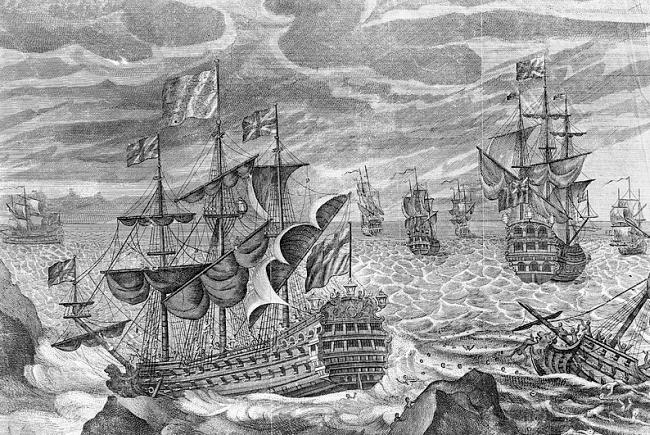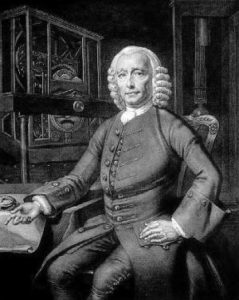Longitude from Dava Sobel is a fascinating account of how a virtually unknown watchmaker named John Harrison conquered one of the oldest and thorniest problems surrounding the ocean voyages – the problem of accurately measuring longitude -, which stumped even the best of scientific minds for centuries.
A fascinating problem
It was Ptolemy in ‘Geographia’, written in the 2nd century, who contributed the concept of a co-ordinate system based on the imaginary lines of latitude and longitude, for the purpose of accurately plotting any spot on the surface of earth. With the concept of these imaginary lines he bought a new light in to the maritime explorations and map-making methods of his time. The sailors while at the ocean found it pretty straightforward to find their current latitude – which is drawn parallel to each other while girdling the globe – by measuring the height of the sun or any known celestial bodies.

But accurately measuring their current longitude was an entirely different case, as the longitudinal lines loop from the North Pole to the South Pole and back again in great circles, which converge at the ends of the earth. Since it is an angular measurement, which is based on time, the sailors had to have access to two different times – the current time on-board the vessel and the time at a known and pre-selected longitudinal location – at the same instance for calculating the hour differences to work out the geographical separation and the longitude.
From a modern viewpoint with our easy-to-carry accurate time-telling devices and instant communication, this problem, which a sailor faced in finding the exact time at two different locations, may feel far-fetched. But a sailor in the middle of an ocean pre-dating 18th century only had limited resources in the form of either a pendulum driven clock, which was not at all reliable – as the factors like gravity, motion of the vessel, temperature and atmospheric pressure affected the pendulum and there by the time – or by comparing positions of moon or planets like Mars with their anticipatory positions in working out the longitudinal values; both these methods were crude with a high level of inaccuracy.
Since the days of Ptolemy, legendary scientific and exploratory minds like Amarigo Vespucci, Sir Issac Newton and Galileo Galilei did a lot of research into this matter but it took sixteen more centuries for mankind to finally invent a reliable solution for this problem.
A tragedy & the declaration of a prize money
In 1707, a British fleet of vessels under Admiral Sir Clowdesley Shovell met with a tragic disaster off the Isles of Scilly, as the result of miscalculations in their whereabouts leading to the sinking of four warships with a death toll of more than 1600 mariners. The Scilly naval disaster is considered as one of the worst maritime disasters in British naval history.

This disaster and huge protests from the merchants and seamen resulted in the formation of a parliamentary committee for finding a practical solution for the longitude problem. This was followed by the 1714 ‘Longitude Act’ by the parliament, which promised a prize money of £ 20,000 for a suitable solution. Dava Sobel covers this formation of the committee and the announcement of the reward in detail.
Sir Issac Newton, who was consulted by the committee, at first suggested the idea of a ‘watch’ for tackling the longitude problem.
“One method is by a Watch to keep time exactly. But, by reason of the motion of the Ship, the Variation of Heat and Cold, Wet and Dry, and the Difference of Gravity in different Latitudes, such a watch hath not yet been made.”
But he believed that such a watch with
too many technical challenges was not going to be a reality and was
aligned more towards finding a solution for the longitude problem in the
realms of astronomy.
“A good watch may serve to keep a reckoning at Sea for some days and to know the time of a celestial Observation; and for this end a good Jewel watch may suffice till a better sort of Watch can be found out. But when the Longitude at sea is once lost, it cannot be found again by any watch.”

Newton died in 1727, and therefore did not live to see the predecessor of the modern day chronometers become a reality. At the same time another less known figure; a skilled watchmaker from Lincolnshire named John Harrison who was stimulated by the scientific and the monetary factors surrounding this riddle decided to find a solution of his own. Possessed with a brilliant mind he succeeded initially in creating a prototype and then further versions of perfect working models of the world’s first marine-chronometers, thereby revolutionizing the ocean travels.
His handmade sea-clocks – which are elaborate pieces of engineering marvels and still in display in working condition at the Royal Observatory, Greenwich, England – gave the world the first reliable method for measuring the longitude.
Dava Sobel records the background and each step of this pioneering invention in an easy to read form, by guiding the reader through a tumultuous story of the sheer determination and relentless pursuit for perfection from a self made man and the obstructions, unkempt promises and villainy he had to face from some of his jealous contemporaries. This concise and engaging chronicle of an innovative engineering deed covers a lot of details on the history, science and politics, which led to this invention and is a recommended read for anyone who is interested in maritime history and science.
The updated fully illustrated edition of ‘Longitude’, which was published later, is a treasure trove with a large selection of rare photographs – including Harrison’s sea-clocks, documents of declarations, letters, scientific articles, maps and diagrams, which adds greatly to the value of the volume.
Written By : Pramod S Nair





